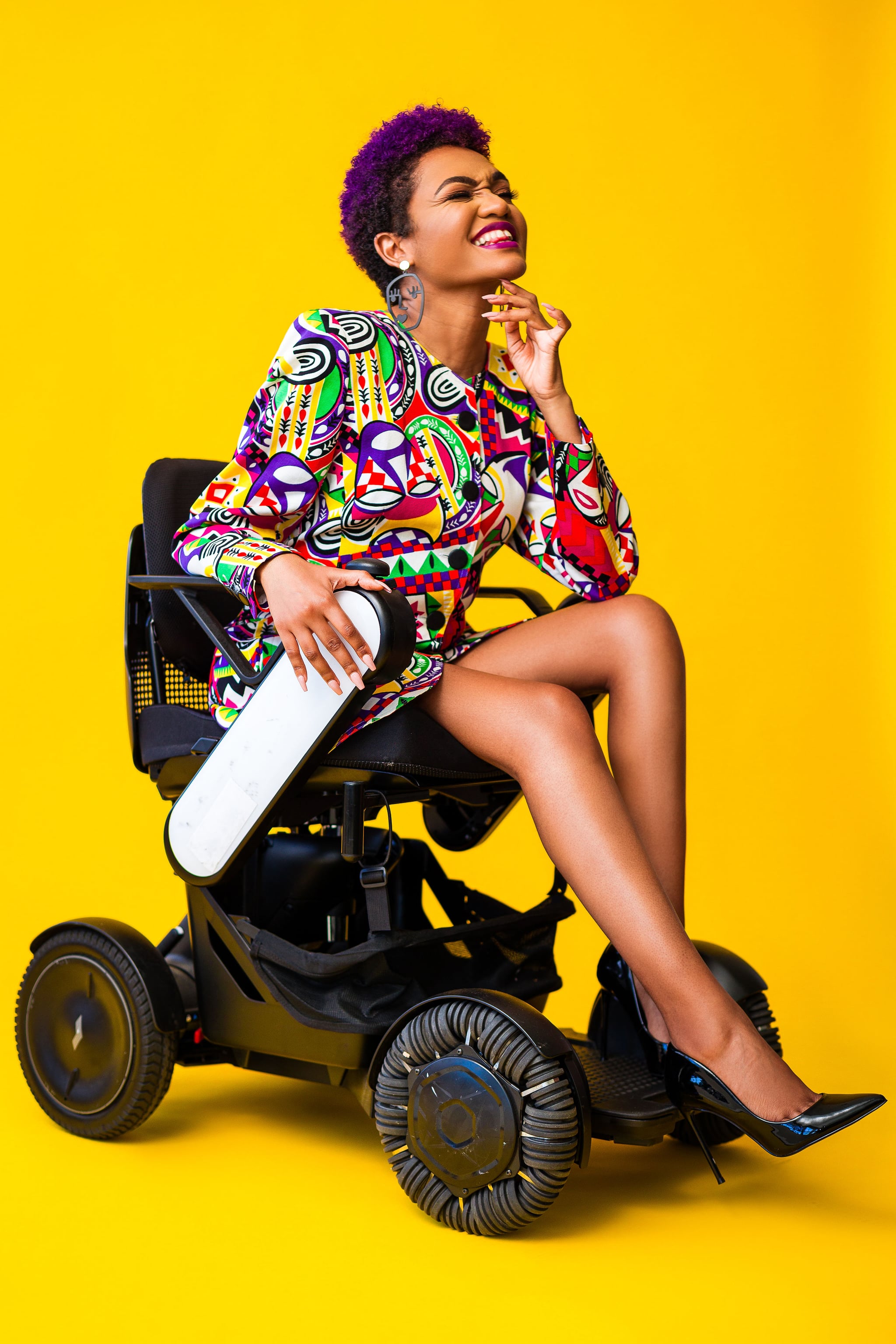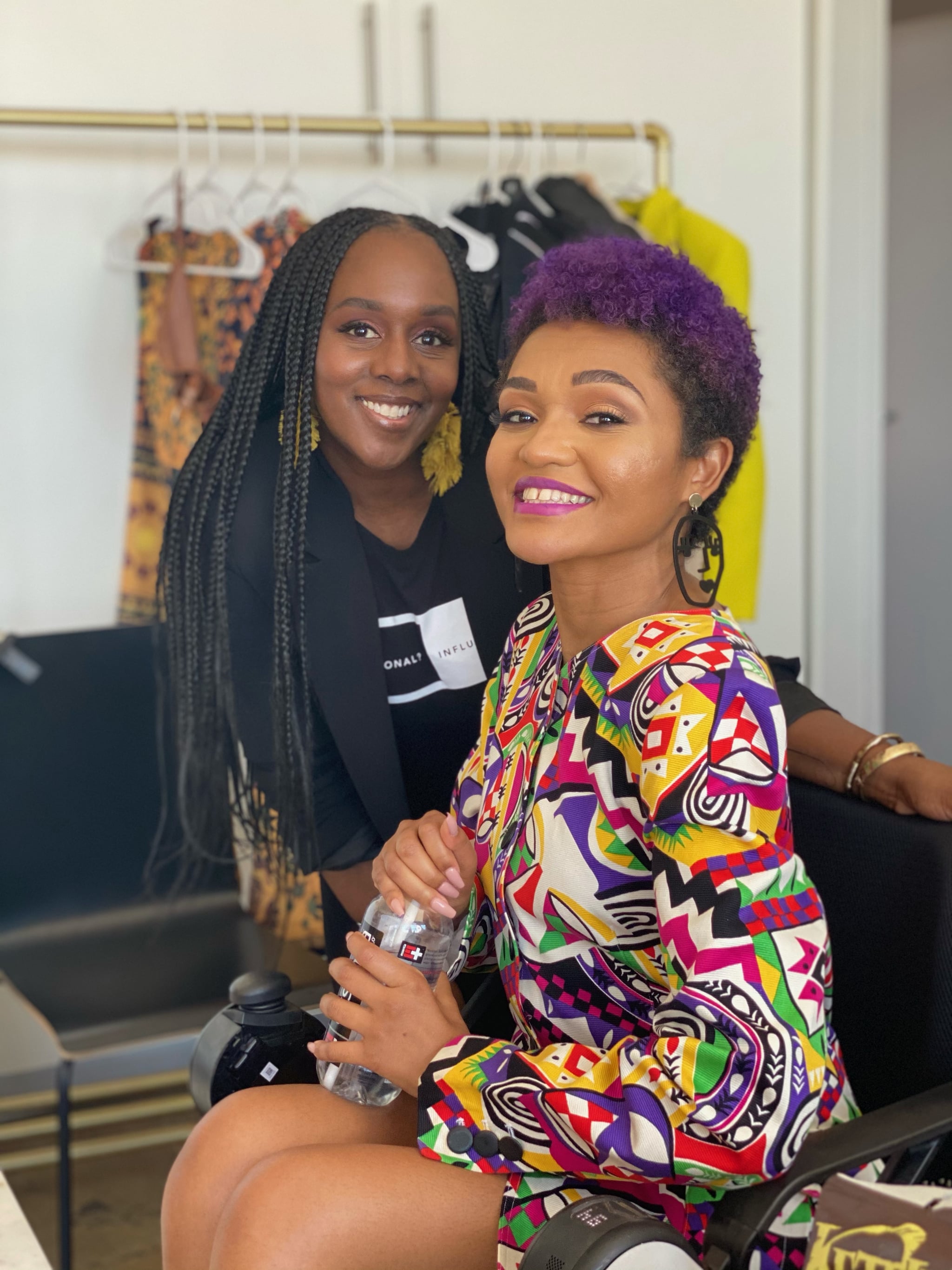Disability Stylist Stephanie Thomas Is Done Asking the Fashion Industry For Favors
Image Source: Benjo Arwas
In a story that rings a touch more ironic than sentimental, founder of Cur8able and disability fashion stylist Stephanie Thomas cites Oprah as an inspiration for a pivotal moment in her life’s work: “I would always watch The Oprah Winfrey Show. [One day] she said, ‘Tomorrow, we will have an inclusive fashion show [with] Tyra Banks, Kimora Simmons, and we’re going to have all body types.’ I was so excited. I was like, ‘OK, I definitely have to be home for this.’ I was home for that, and I noticed they left out people with disabilities, and that’s when it dawned on me: I have to go directly to fashion brands to get them on board. That was 2003,” Stephanie told me when we spoke on the phone. As a congenital amputee, Stephanie herself is a woman with a disability, and she’s spent nearly 14 years as a stylist, dressing people with disabilities, and consulting with brands, like Nike and Kohl’s, on their adaptive clothing lines.
Incidentally, Oprah’s not-so-inclusive fashion show became Stephanie’s call to action. At that point, she was a full-time reporter, but she quickly got to work cold-calling brands about considering design options for people with disabilities. “That’s when the styling all started for me. That whole year, I had conversations with different brands. I just reached out to traditional designer brands, and they kind of strung me along for a year. [One] brand flew me to California. I had a conversation with their head stylist. She was a real sweetheart. Her mom worked in the medical profession, and so she got what I did. She basically told me I was going to design with them, she walked me around the factory. The designers were looking at me like, ‘Who is this?’ They knew what I know now that I didn’t know then, that this woman was really just being very kind to me. She walked me around the factory, gave me some clothes, and they never took my call again.” That was just one early indication that Stephanie was already well ahead of an industry that has long excluded people with disabilities.
Drawing on her learnings, Stephanie founded her Disability Fashion Styling System in 2004 and used it to empower people with disabilities to dress with dignity and independence. Then, in 2006, she had an epiphany: “I went to buy some food for [my cat] Mr. Yeti, and I noticed that there were all of these various [pet clothes], there was this really cute trench coat [that had] functional pockets, and I just got really annoyed. I was like, ‘Why do we literally have more clothing options in the store for dogs than for people with disabilities?’ And then that inspired me to start a program called The PJ Deejay. While working in radio as a morning-drive host, Stephanie dreamed up the idea for a campaign to raise awareness for people with disabilities and the lack of clothing options they have. “I packed away my clothes for an entire year [and] bought 60 pajama pieces. I counted down 365 days of giving people information, going out to speak, wearing pajamas. It didn’t matter where I went — to church, on a date, traveling, for work, it didn’t matter. I wore those pajamas for 365 days.”
Stephanie’s campaign culminated in a fashion show of her own. She partnered with a mall and presented a runway, with “women who were pregnant, women who had seated body types, women who were amputees.” This wasn’t a one-time stunt; Stephanie’s commitment to her work would continue to challenge the fashion industry to make space for people with disabilities. And, while that may have started by advocating for inclusive fashion lines and adaptive clothing, she’s done asking designers to do the bare minimum. “I’m going to let everybody else advocate for adaptive clothing. I’ve been talking about it since 1992, when I first learned about it. So I’m done talking about it. I’m done asking the fashion industry to come along and help us, as if they’re doing us a favor. I want to create FOMO . . . You know what I mean? I want people to feel like they’re missing out on this beautiful opportunity.”

And that’s where Stephanie excels, fighting passionately to bridge the gap between what exists for her clients and what they they deserve. “I use adaptive fashion that’s needed primarily in situations where it’s not going to be medically safe to use anything else. But there are not enough choices. [My] Disability Fashion Styling System acts as a bridge between where the fashion industry is and where it must inevitably go to be inclusive.” With that system in place, she uses her expertise to source clothing that works for her clients, like actress and model Lauren “Lolo” Spencer, who has been living with ALS for 18 years, and Tatiana Lee, who was born with spina bifida. Beyond the outfits, she’s helping them to navigate their personal style and advocate for their clothing needs, whether they’re just out shopping or shooting on set, and that can be a powerful experience for someone who’s been excluded from fashion. That’s obvious from the stories Stephanie told me about working with her clients, recalling a shopping trip she took with Tatiana to help her find shoes: “[Tatiana’s] feet hang straight down. She’s always had difficulty finding shoes . . . [but] she had her size wrong [and] she didn’t know . . . We found out so much. I remember the first store we went to, and she just broke down and started crying, because she was trying on shoes that she would have never even just picked up. Not tried on, just picked up.”
In that way, Stephanie empowers her clients, addressing their needs head on. “I don’t want to make people dependent on me. At first, I wanted to train tons of stylists to have [people with disabilities] use them. And then I was like, ‘I want people to be able to do this for themselves.'”
“What I do advocate for, still, is authentic representation of disability in fashion behind the cameras, in front of the cameras, because that’s the thing that matters,” Stephanie continued. “I’m no longer advocating for brands to make adaptive clothing. When brands bring me in now, I am advocating for human-centered universal design.”
“Human-centered universal design” sounds like a basic ask, until you consider how far fashion has to go to be truly inclusive. It is the exception, not the norm, to see people with disabilities in campaigns and editorials, though the CDC estimates that 26 percent of adults in the United States are living with a disability. “The problem at its core, at a very basic level, is the social implications of fashion and ableism,” Stephanie explained, noting how fashion has always centered nondisabled bodies as it has straight-size and white bodies in campaigns and editorials. When fashion still spotlights people with disabilities only as part of separate, targeted collections, then we have only begun to scratch the surface of inclusion.
That’s the difference between knowing the language and understanding and engaging with culture, Stephanie told me: “You cannot skip culture and go to language. It’s not enough to know amputee and not understand the culture that I’m a congenital amputee, missing digits; not limbs, digits, and that impacts my body, that impacts how I ambulate, that impacts my lower back, that impacts everything about me. Stop being so concerned about how to refer to someone with a disability, and actually, respectively engage, [educate yourself] through interaction, and learn culture.”
Image Source: Courtesy of Stephanie Thomas; Pictured: Stephanie Thomas with Lauren “Lolo” Spencer
When you begin to understand culture, you move beyond stereotypes and tropes — and tokenism. Real understanding, Stephanie noted, means “understanding what to do with models with disabilities when you get them on the set. How do you have somebody roll over the paper, who has seated body type and uses a wheelchair, to keep the paper from crinkling up? Understanding that you don’t look at someone when you’re addressing them and go, ‘Oh my gosh, you’re so inspirational.’ Understanding how to produce marketing material and assets, including people with disabilities, but doing it in a way that honors their body type; making sure that if you have a little person, that you make sure that once we’re back to craft services table, that it’s low enough for them, or have a stepping stool, [or] making sure that you have a bench for someone to transfer on.” That will be the path forward — the way to make authentic representation possible.
I asked Stephanie what that looks like — what does authentic representation mean for an industry that has rarely gone beyond lip service, and what are the signs that we’re making progress? “Authenticity begins with access. One marker for me is hiring trained models with disabilities. There are talented, skilled models who would like to be hired for campaigns that are not limited to social media,” she told me, shrugging off the industry’s performative allyship. “Hire disabled gatekeepers [editors], photographers, publicists, designers . . . and more. Give our community access to the fashion industry, uplift our voices, listen to our thoughts. That’s the marker. When there is no special story on it.” She then landed on this final thought, the simple truth that “people just want to know you’re genuinely interested in them as humans.” Now, it’s time for fashion to reflect that.
Source: Read Full Article

